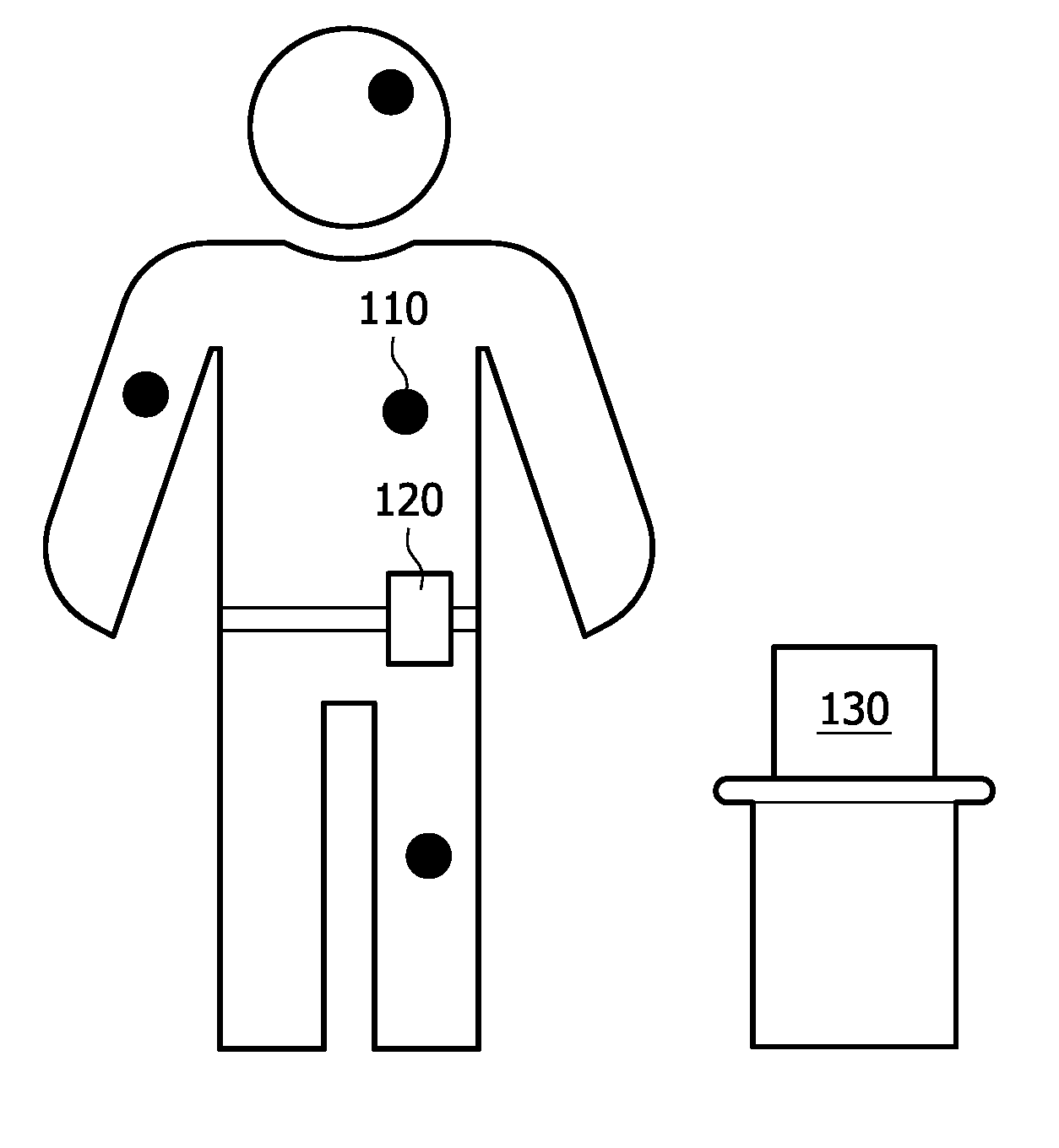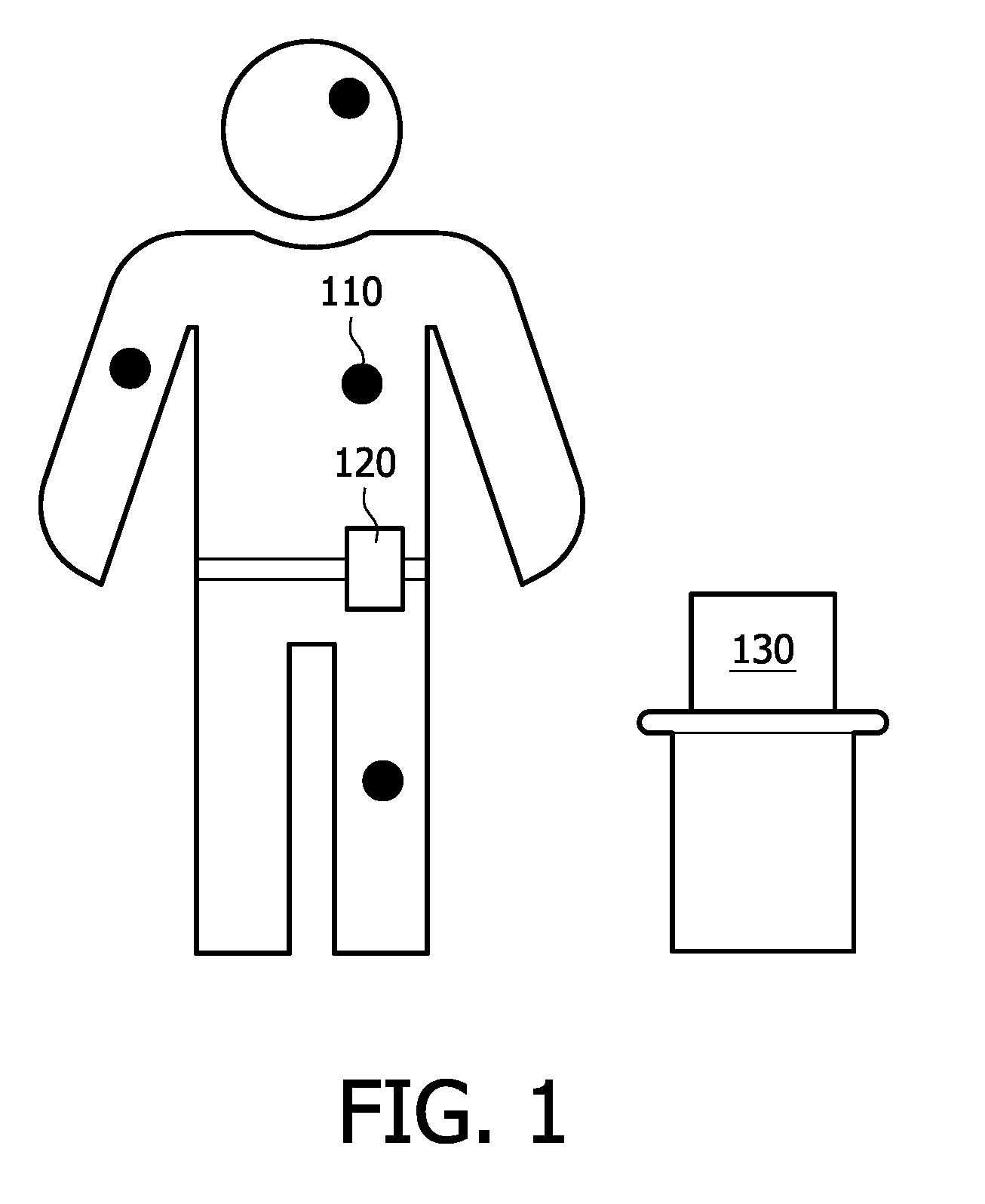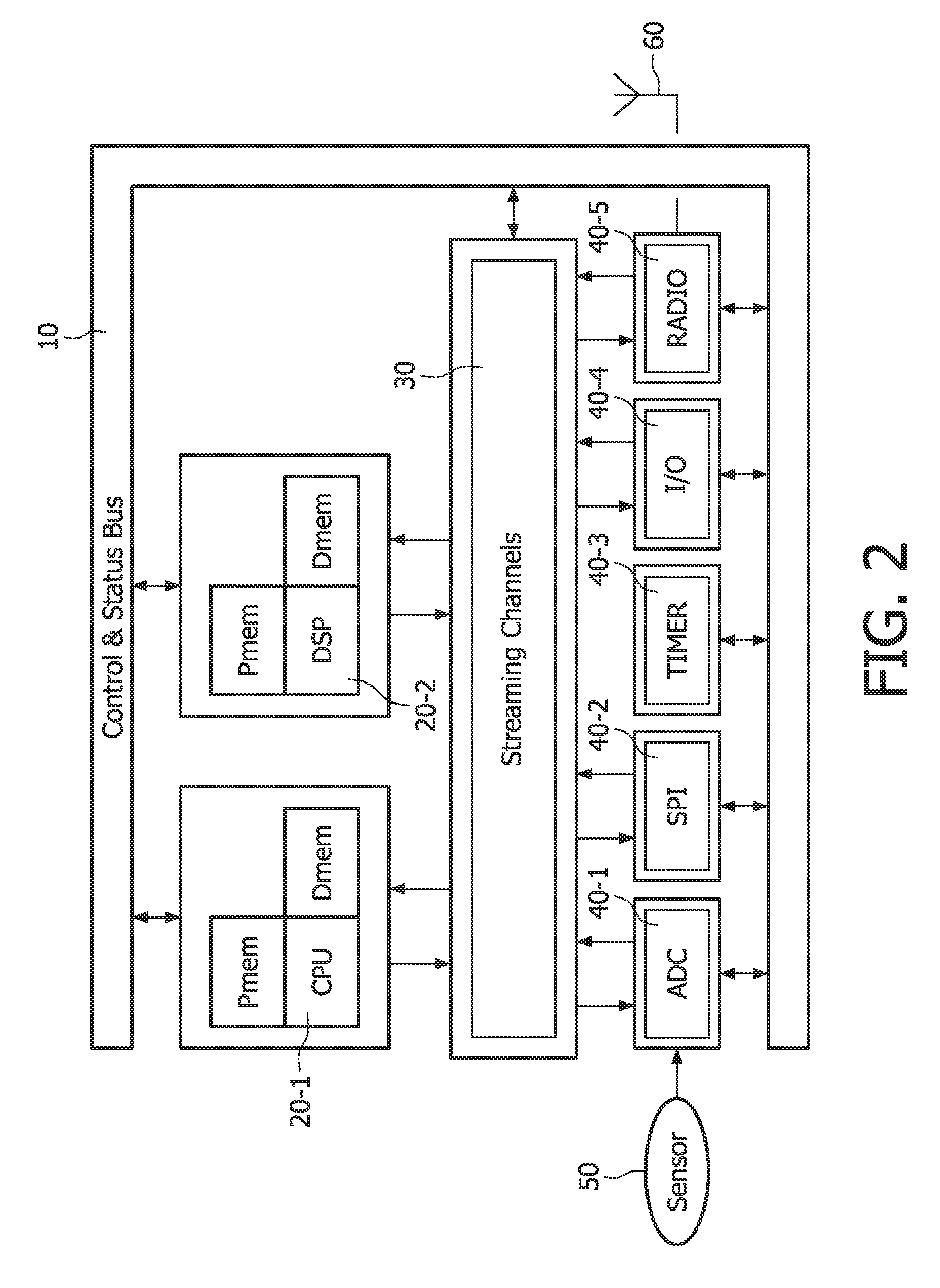Wireless sensor node architecture with autonomous streaming
a sensor node and streaming technology, applied in the field of wireless sensor node architecture with autonomous streaming, can solve the problems of inability to predict requests, important power consumption, and inability to meet the needs of users, so as to improve the sensor architecture and alleviate or prevent the mentioned drawbacks
- Summary
- Abstract
- Description
- Claims
- Application Information
AI Technical Summary
Benefits of technology
Problems solved by technology
Method used
Image
Examples
Embodiment Construction
[0030]Various embodiments of the present invention will now be described based on a BSN system as an example of a wireless sensor network.
[0031]FIG. 1 shows a schematic diagram of a BSN system with a number of locations on a body, where sensor nodes or devices 110 are attached. Besides the sensor nodes 110 located around or implanted in the body, the BSN system may comprises one or more access or collating devices 120, 130, which receive signals or sensing data from the sensor nodes 110 and which may be configured to upload the received information to a central server (not shown).
[0032]In the exemplary arrangement of FIG. 1, a mobile access or collating device 120 is configured to be worn somewhere on the body (e.g. on a belt), and / or may alternatively be integrated into an electronic device, such as a mobile phone, which would be carried anyway. Additionally, a fixed access or collating device 130 may be located in specific areas (e.g. at home, for example in the lounge and bedroom...
PUM
 Login to View More
Login to View More Abstract
Description
Claims
Application Information
 Login to View More
Login to View More - R&D
- Intellectual Property
- Life Sciences
- Materials
- Tech Scout
- Unparalleled Data Quality
- Higher Quality Content
- 60% Fewer Hallucinations
Browse by: Latest US Patents, China's latest patents, Technical Efficacy Thesaurus, Application Domain, Technology Topic, Popular Technical Reports.
© 2025 PatSnap. All rights reserved.Legal|Privacy policy|Modern Slavery Act Transparency Statement|Sitemap|About US| Contact US: help@patsnap.com



